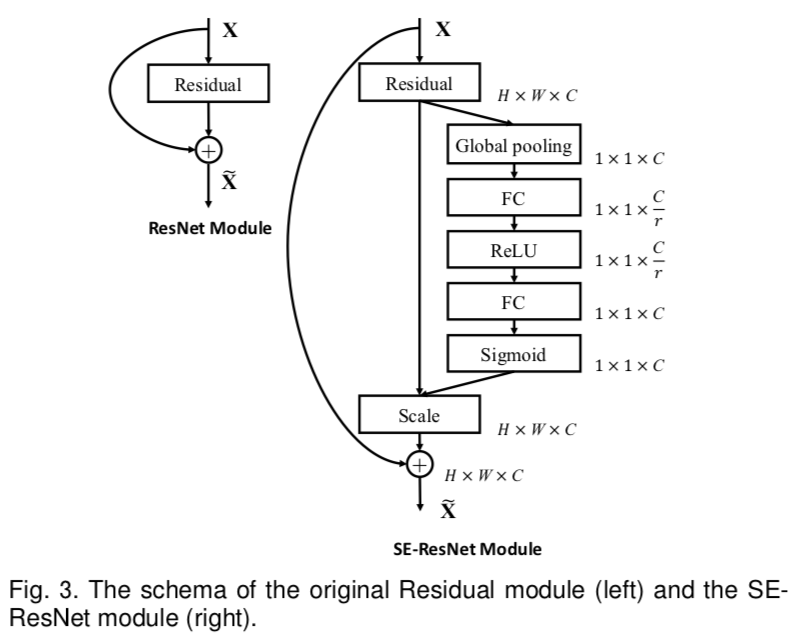| layout | background-class | body-class | title | summary | category | image | author | tags | github-link | github-id | featured_image_1 | featured_image_2 | accelerator | order | demo-model-link | |
|---|---|---|---|---|---|---|---|---|---|---|---|---|---|---|---|---|
hub_detail |
hub-background |
hub |
SE-ResNeXt101 |
ResNeXt with Squeeze-and-Excitation module added, trained with mixed precision using Tensor Cores. |
researchers |
nvidia_logo.png |
NVIDIA |
|
NVIDIA/DeepLearningExamples |
SEArch.png |
classification.jpg |
cuda |
10 |
The SE-ResNeXt101-32x4d is a ResNeXt101-32x4d model with added Squeeze-and-Excitation module introduced in the Squeeze-and-Excitation Networks paper.
This model is trained with mixed precision using Tensor Cores on Volta, Turing, and the NVIDIA Ampere GPU architectures. Therefore, researchers can get results 3x faster than training without Tensor Cores, while experiencing the benefits of mixed precision training. This model is tested against each NGC monthly container release to ensure consistent accuracy and performance over time.
We use NHWC data layout when training using Mixed Precision.
Image source: Squeeze-and-Excitation Networks
Image shows the architecture of SE block and where is it placed in ResNet bottleneck block.
Note that the SE-ResNeXt101-32x4d model can be deployed for inference on the NVIDIA Triton Inference Server using TorchScript, ONNX Runtime or TensorRT as an execution backend. For details check NGC.
In the example below we will use the pretrained SE-ResNeXt101-32x4d model to perform inference on images and present the result.
To run the example you need some extra python packages installed. These are needed for preprocessing images and visualization.
!pip install validators matplotlibimport torch
from PIL import Image
import torchvision.transforms as transforms
import numpy as np
import json
import requests
import matplotlib.pyplot as plt
import warnings
warnings.filterwarnings('ignore')
%matplotlib inline
device = torch.device("cuda") if torch.cuda.is_available() else torch.device("cpu")
print(f'Using {device} for inference')Load the model pretrained on IMAGENET dataset.
resneXt = torch.hub.load('NVIDIA/DeepLearningExamples:torchhub', 'nvidia_se_resnext101_32x4d')
utils = torch.hub.load('NVIDIA/DeepLearningExamples:torchhub', 'nvidia_convnets_processing_utils')
resneXt.eval().to(device)Prepare sample input data.
uris = [
'http://images.cocodataset.org/test-stuff2017/000000024309.jpg',
'http://images.cocodataset.org/test-stuff2017/000000028117.jpg',
'http://images.cocodataset.org/test-stuff2017/000000006149.jpg',
'http://images.cocodataset.org/test-stuff2017/000000004954.jpg',
]
batch = torch.cat(
[utils.prepare_input_from_uri(uri) for uri in uris]
).to(device)Run inference. Use pick_n_best(predictions=output, n=topN) helper function to pick N most probable hypotheses according to the model.
with torch.no_grad():
output = torch.nn.functional.softmax(resneXt(batch), dim=1)
results = utils.pick_n_best(predictions=output, n=5)Display the result.
for uri, result in zip(uris, results):
img = Image.open(requests.get(uri, stream=True).raw)
img.thumbnail((256,256), Image.ANTIALIAS)
plt.imshow(img)
plt.show()
print(result)For detailed information on model input and output, training recipies, inference and performance visit: github and/or NGC.
